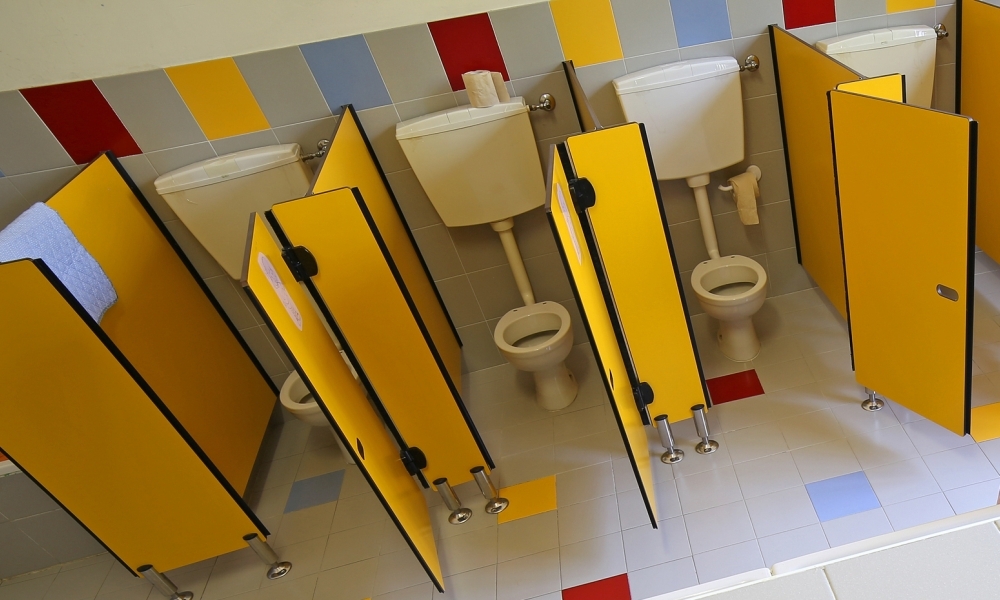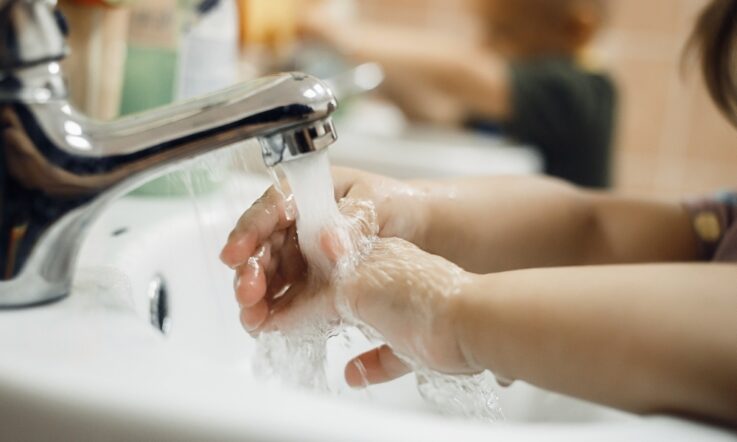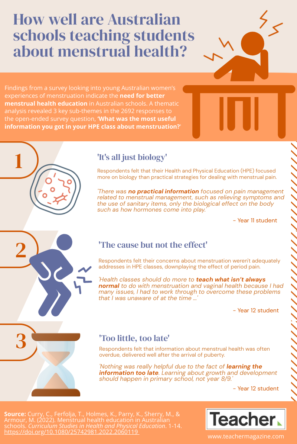As we discussed in yesterday's Teacher article – Toilet training issues in school and encouraging healthy habits – not all students start school toilet trained. Others need ongoing support due to physical or mental health issues, and some who have previously had no problems suddenly start to have difficulties. In this follow-up, Janie Thompson – Manager and Nurse Continence Specialist at the Continence Foundation of Australia's National Continence Helpline – shares some of the real-life situations faced by educators who ring the helpline, along with strategies and advice.
The National Continence Helpline (NCHL) 1800 33 00 66 is a free telephone service staffed by Nurse Continence Specialists who offer confidential information, advice and support to people affected by incontinence or continence issues. It operates Monday to Friday from 8am-8pm AEST and is funded by the Australian Government Department of Health.
The NCHL often receive calls from parents, carers, teachers, principals and school nurses regarding children who are living with continence issues. This is often around soiling or wetting at school. Some of the common situations are as follows:
Overactive bladder
Whilst it is preferable for a child to use the toilet during breaks and not class time, for some children, this isn’t always possible.
Jenny is a child with an overactive bladder and doesn’t get a lot of warning before she needs to go to the toilet. This can cause urgency, frequency and even incontinence. Therefore, Jenny needs to be supported to get to the toilet whenever she needs to go.
Unfortunately, there can be a perception that the child has held on too long but, with an overactive bladder, this is definitely not the case. The NCHL has received calls about school toilets being locked, it can take time to be able to access a toilet and children are told they can only go to the toilet at break times. This results in increased likelihood of incontinence for children who have an overactive bladder.
Constipation
For some children, constipation can be a real challenge.
Nicky is scared and anxious about using the school toilets and is now at risk of developing constipation. If he doesn’t go to the toilet to use his bowels when he needs to, he may end up constipated as more fluid is drawn away from the bowel motion by the body when the stool stays in longer and moves back up higher in the bowel. Nicky’s hard stool may then lead to stool withholding if he experiences pain with defaecation or pooing. This can result in constipation and faecal incontinence or soiling often without awareness.
Nicky could end up with rectal hyposensitivity, which means he struggles to feel if there is something in his rectum or bottom. The trigger to go to the toilet is stool moving into the rectum, but this trigger is lost if stool is constantly present. As a result, Nicky may not know when he needs to go to the toilet. The stool can then leak out without awareness and cause soiling and odour.
Constipation and stool withholding is a very common reason for a parent to call the helpline. Treatment often involves longer term use of laxatives to keep the stool soft, so the child doesn’t experience any pain when passing a bowel motion, and a toilet program to help the child establish a regular bowel routine or habit. It is important for school toilets to be clean, inviting and private so that children are comfortable to use their bowels at school.
Children living with neurodiverse conditions
Children living with conditions such as autism spectrum disorder and attention deficit hyperactivity disorder can need more time and support to achieve toilet training or continence. A toilet program may be in place to prompt and remind a child to go to the toilet as they develop their toileting skills. Working with the child and their family will help the child to succeed with this important developmental step.
Make sure you speak to a child’s family if you notice a child needing to go to the toilet frequently, rushing to get there and/or experiencing incontinence of urine or faeces, even a small amount. This needs to be followed up, initially, with the child’s GP and then possibly with a continence service and/or continence health professional.
It is important to make sure that there are good lines of communication with the child’s family/carers and the school. When planning for a child who is living with a continence issue to attend school, it is important that this is discussed well in advance. Schools need to support children living with incontinence to be able to attend school.
If a continence management plan is in place, then it is helpful if this is discussed and shared between the child’s family and the school. If a child is on the National Disability Insurance Scheme (NDIS, including if paid carers/health professionals are involved in supporting the child, then planning meetings should be held with the school and the family so the child can be supported to achieve the goals of their NDIS plan.
Don is 5 and has cerebral palsy. He has tight muscles in his legs and is unable to walk but uses a wheelchair. He can stand with the aid of a walking frame. He has speech but can be difficult to understand. He has good cognition, but requires assistance with all areas of personal hygiene, dressing and help with food and fluid. Don attends a public primary school and has an NDIS-funded aide. He has been wearing nappies and is aware of when they are wet or soiled. One of his NDIS goals is to wear underpants and be able to use the toilet.
A case conference with his family and NDIS support coordinator discussed the toileting area at the school and the supports that were required so Don could be transferred and sat on the toilet to overcome day wetting and occasional soiling. Once Don’s bodily routines were monitored and a pattern emerged, he was toileted on arrival at school, at recess and then again at 2.30 pm. This proved effective as it was allowing him to sit longer on the toilet each time. Don is now wearing underpants and has had no incontinence at school.
Remember, the National Continence Helpline is available to discuss any queries you may have and please encourage family or carers to call. The number is 1800 33 00 66 and this service operates Monday to Friday from 8am to 8pm AEST.
Reading the scenarios above, have you faced similar situations as an educator? Reading the advice from Janie Thompson, would you go back and change your response?
How would you react if a student asked to use the toilet during lesson time?
Thinking about your own school, are the toilets clean and inviting? Is there privacy for children to feel comfortable using them?



